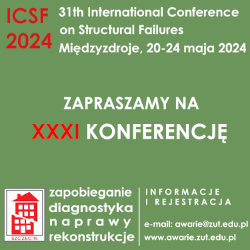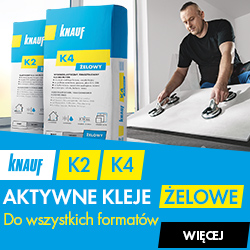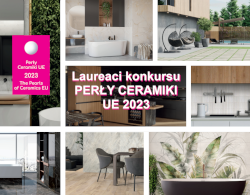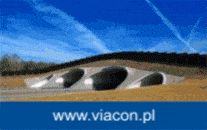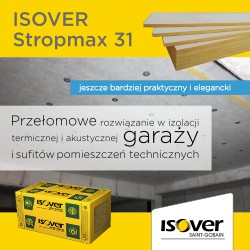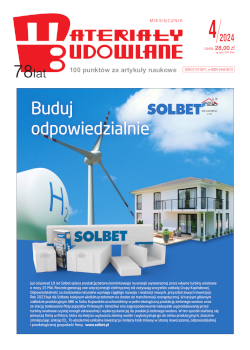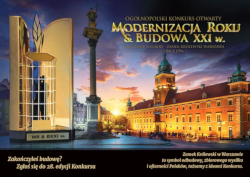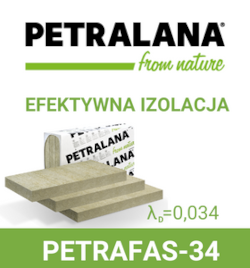Open Access (Artykuł w pliku PDF)
The impact of ventilation combining with moisture-buffering materials on selected parameters of environmental comfort in a nursery
dr inż. Dobrosława Kaczorek, Instytut Techniki Budowlanej
ORCID: 0000-0001-5014-4326
dr hab. inż. Małgorzata Basińska, prof. PP, Politechnika Poznańska, Wydział Inżynierii Środowiska i Energetyki
ORCID: 0000-0001-6180-641X
Adres do korespondencji: Ten adres pocztowy jest chroniony przed spamowaniem. Aby go zobaczyć, konieczne jest włączenie w przeglądarce obsługi JavaScript.
DOI: 10.15199/33.2024.04.03
Studium przypadku
Streszczenie. W artykule przedstawiono wyniki symulacji wpływu działania systemów wentylacyjnych w połączeniu z buforowaniem wilgoci w przegrodach na jakość powietrza i komfort cieplny w żłobku. Symulacje przeprowadzono w programie WUFI Plus. Porównano działanie wentylacji mechanicznej z wentylacją grawitacyjną. Analizy wykazały, że sterowanie stężeniem CO2 jest korzystniejsze w przypadku lokalnego komfortu, a buforowanie wilgoci w materiałach wpływa na zmniejszenie amplitudy zmian wilgotności w pomieszczeniu.
Słowa kluczowe: klimat wewnętrzny; jakość powietrza wewnętrznego; buforowanie wilgoci; systemy wentylacyjne.
Abstract. The article presents the results of simulations on the impact of ventilation systems combined with moisture buffering in partitions on air quality and thermal comfort in a nursery. The simulations were conducted using theWUFI Plus software. The performance of mechanical ventilation was compared with gravity ventilation. The analyses indicated that controlling CO2 concentration is more favorable for local comfort, and moisture buffering inmaterials reduces the amplitude of humidity changes in the room.
Keywords: indoor climate; indoor air quality; moisture buffering; ventilation systems.
Literatura
[1] Zhuang C, Shan K,Wang S. Coordinated demand- controlled ventilation strategy for energy- -efficient operation in multi-zone cleanroom air- -conditioning systems. Build Environ. 2021; https://doi. org/10.1016/j. buildenv. 2021.107588.
[2] Guyot G, Sherman MH, Walker IS. Smart ventilation energy and indoor air quality performance in residential buildings: A review. Energy Build. 2018; https://doi.org/10.1016/j.enbuild. 2017.12.051.
[3] Simonson CJ, Salonvaara M, Ojanen T. The effect of structures on indoor humidity – possibility to improve comfort and perceived air quality. Indoor Air. 2002; https://doi. org/10.1034/j.1600- 0668.2002.01128.x.
[4] Teodosiu C, Hohota R, Rusaouen G, Woloszyn M. Numerical prediction of indoorair humidity and its effect on indoor environment. Build. Environ. 2003; https://doi.org/10.1016/S0360- -1323 (02) 00211-1.
[5] Künzel HM, Holm A, Zirkelbach D, Karagiozis AN. Simulation of indoor temperature and humidity conditions including hygrothermal interactionswith the building envelope. Sol. Energy. 2005; https://doi.org/10.1016/j.solener.2004.03.002.
[6] Kaczorek D, Pietruszka B. Buforowanie wilgoci przez innowacyjne przegrody wewnętrzne. Materiały Budowlane. 2017; https://doi. org/10.15199/33.2017.08.10.
[7] Woloszyn M, Kalamees T, Abadie MO, Steeman M, Kalagasidis AS. The effect of combining a relative-humidity-sensitive ventilation system with the moisture-buffering capacity of materials on indoor climate and energy efficiency of buildings. Build. Environ. 2009; https://doi. org/10.1016/j. buildenv. 2008.04.017.
[8] WUFI PlusV3.2.0.1: Fraunhofer Institute for Building Physics.
[9] Künzel HM. Simultaneous heat and moisture transport in building components – One- and two- -dimensional calculation using simple parameters. PhD thesis. Fraunhofer Institute of Building Physics. Stuggart. Germany; 1995.
[10] PN-EN 15026:2008 Cieplno-wilgotnościowe właściwości użytkowe komponentów budowlanych i elementów budynku – Szacowanie przenoszenia wilgoci za pomocą symulacji komputerowej.
[11] Künzel HM, Holm A, Zirkelbach D. Simulation of indoor temperature and humidity conditions including hygrothermal interactions with the building envelope., Sol. Energy. 2005; https://doi.org/10.1016/j.solener. 2004.03.002.
[12] Coelho GBA, Entradas Silva H, Henriques FMA. Calibrated hygrothermal simulation models for historical buildings. Build. Environ. 2018; https://doi.org/10.1016/j.buildenv. 2018.06.034.
[13] Kaczorek D, BasińskaM, Koczyk H. Hygrothermal behaviour of a room with different occupancy scenarios. J. Build. Eng. 2023; https://doi. org/10.1016/j. jobe. 2023.105928.
[14] ASHRAE. ANSI/ASHRAE Standard 55- 2004: Thermal Environmental Conditions for Human Occupancy. Atlanta, GA: American Society of Heating, Refrigerating and Air-Conditioning Engineers. Inc., Atlanta, GA, USA; 2004.
[15] IEA Annex 41.Whole building heat, air,moisture response; https://research. tuni. fi/buildingphysics/ international-collaboration/annex-41/ (dostęp 9 stycznia 2024).
[16] ASHRAE. ANSI/ASHRAE Standard 62.2 Ventilation for Acceptable Indoor Air Quality in residential buildings. American Society of Heating, Refrigerating and Air-Conditioning Engineers, Inc., Atlanta, GA; 2022.
[17] Rozporządzenie Ministra Pracy i Polityki Społecznej z 10 lipca 2014 r. w sprawie wymagań lokalowych i sanitarnych, jakie musi spełniać lokal, w którym ma być prowadzony żłobek lub klub dziecięcy (DzU 2014, poz. 925).
[18] DIN 1946-2Ventilation and air conditioning. Technical health requirements (VDI ventilation rules); 2008.
[19] Latif E, Lawrence M, Shea A, Walker P. Moisture buffer potential of experimental wall assemblies incorporating formulated hemp-lime. Build. Environ. 2015; https://doi. org/10.1016/j. buildenv. 2015.07.011.
[20] Shang Y, Tariku F. Hempcrete building performance in mild and cold climates: Integrated analysis of carbon footprint, energy, and indoor thermal andmoisture buffering. Build. Environ. 2021; https://doi.org/10.1016/j.buildenv. 2021.108377.
[21] PN-ENISO7730:2006: Ergonomia środowiska termicznego. Analityczne wyznaczanie i interpretacja komfortu termicznego z zastosowaniem obliczania wskaźników PMV i PPD oraz kryteriów miejscowego komfortu termicznego.
Przyjęto do druku: 20.03.2024 r.
Materiały Budowlane 4/2024, strona 15-19 (spis treści >>)










